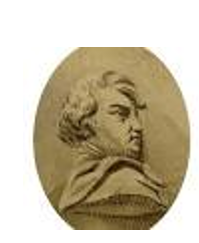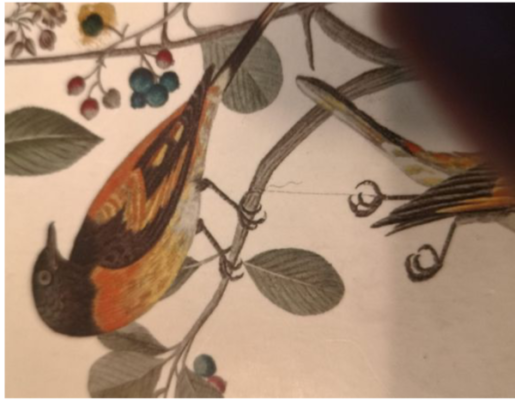THE DUTCH GOVERNOR AND THE BURGHER ARTIST – By HUGH KARUNANAYAKE

GOVERNOR GIDEON LOTEN

WATER COLOUR BY DE BEVERE FROM THE LOTEN COLLECTION AT THE NATURAL HISTORY MUSEUM LONDON
The following item appeared in a catalogue entitled Bibliotheca Neerlando Indica, issued sometime in 1883by Martinus Neyhoff a well known bookseller at the Hague.
Item: 2299-Fauna of the Indian Archipelago and of the island of Ceylon – a collection of drawings in colour representing birds, mammifers, insects etc of the zindian Archipelago and Ceylon. 144 folio sheets in two part folios – f300
The collection was bought at the auction by PJ van Houten, Chairman of the Council and Committee of the Colonial Museum at Haarlem. In 1905 Van Houten published a memoir on John Gideon Loten and his Ceylonese artist, Pieter Cornelis de Bevere. Van Houten having bought the De Bevere collection in. 1883 described several water colours by the artist and also added biographical information on the artist based on written notes by Loten himself.
John Gideon Loten was the 36 th Dutch Governor of Ceylon, was. popularly referred to as the “Naturalist Governor of Ceylon’.
Loten a virtuoso in his own right, was fascinated by the diversity and natural beauty of Ceylon and he made it his duty to reveal his observations through the myriad contacts he had in the academic and artistic worlds of the eighteenth century. He held office as Governor of Ceylon for five years between 1752 and 1757. Although one may say that it took 36 successive Dutch administrations to discover the natural beauty of Ceylon, a country whose biodiversity, I make bold to state, is unmatched by any other country in the world, we are duty bound to acknowledge the pioneering role of Governor Loten in bringing out to the world his fascinating discoveries in Ceylon.
Governor Loten was easily the most cerebral colonial Governor of Ceylon, and his intellectual pursuits during his governorship in Ceylon, and thereafter in England and elsewhere is the subject of many a published work, the latest of which is a 829 page tome entitled “The Life of Governor Joan Gideon Loten (1710 _1789)- a personal history of a Dutch virtuoso.” By Alexander JP Raaf, Hilversum, Verlorem.2010.
The front cover of the book features an illustration by artist Pieter Cornelis de Bevere from his work “Collection of birds from Ceylon” circa 1974. Much of the information presented here is from the book under reference.

COLOMBO HARBOUR IN 1768 BY DE BEVERE
The world is indebted to the artist De Bevere for so skillfully reproducing images of Ceylon including not only the diverse flora and fauna of the island, but also of the country’s scenery featuring 18 th Century buildings and constructions which featured in its landscape. The value of De Bevere’s work would be more appreciated when we realise that the art of photography was yet to be invented, and contemporary 18 th century imagery would otherwise be totally unavailable to today’s afficionados of our heritage.
Who was De Bevere then,and what was his connection with the Dutch virtuoso Governor Loten ?
In a letter to Thomas Pennant author of the two volume “A Vew of Hindoostan” 1798.”Loten described De Bevere thus “The young man who drew most part of the birds, plants, fishes and quadrupeds for me was a native of Colombo. His surname was De Bevere, his father was a bastard of Major de Bevere(a gentleman descended from a very honourable family) with an Indian woman, the young man was belonging to the Surveyor’s office at Colombo, and hath some notions of geometry and drawing, which I cultivated by giving him some good prints of landscapes and the prints of Mr Geo Edwards & Catesby &c to serve him for patterns of natural history. I guessed him in 1755 to have been 23 or 24 years of age”. De Bevere’s sketchbook was bought in 1799 by JC Hollebeek a resident of Galle. Among the Loten papers in the Dutch National archives in Loten’s handwriting on a loose sheet was the following “ The artist De Bevere has abandoned himself at last to a debauched life, and also died because of that, his mother who was married to one Gabriel Hefland Bookkeeper of the stockhouse is now a widow for the second time and still lives sound and well.” Another note in Loten’s handwriting stated:’ De Bevere, the untaught Christian Cingalese- his father whom I have known was a natural son of the Major De Bevere( of the most noble and ancient family of De Bevere) by a Cingalese or black Portuguese woman- the son was married at Colombo with a similar brownish woman of whom this artist was a son.
The artist De Bevere has left Sri Lanka and the world a lasting legacy of rare imagery of the country as it existed in the eighteenth century. Photography and mass media was yet to envelope the world. De Bevere’s work is therefore significantly of greater impact than the work of his patron the Governor.
The eighteenth century has been described variously as ‘the age of reason” or the “ age of enlightenment’. Those terms seem incongruous in a setting where a child who was the product of an illegal Liaison is deemed to be the guilty party lacking in moral turpitude rather than the parents, as overtly suggested by Governor Loten. Time, and the evolution of more rational social and moral values seem to have done us better and we hope that contemporary society will not view the circumstances of the artist’ s entry into the world, with jaundiced eyes.
On another note, It must also be said that the late Mr Donald Ferguson, and the late Mr RG Anthonisz had made efforts through the Royal Asiatic Socociety ( Ceylon Branch) to procure some of the invaluable work of De Bevere but had not met with success during British colonial days. The time may now be opportune for a Sri Lanka Government to pursue the re acquisition of art and artifacts taken away from the country during the days of colonial rule and it is also time that the bastard De Bevere returned to his true home!.







